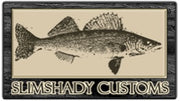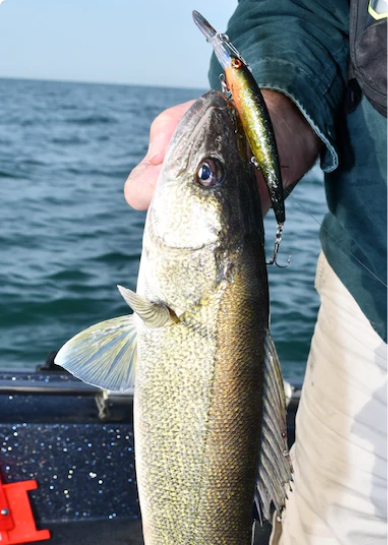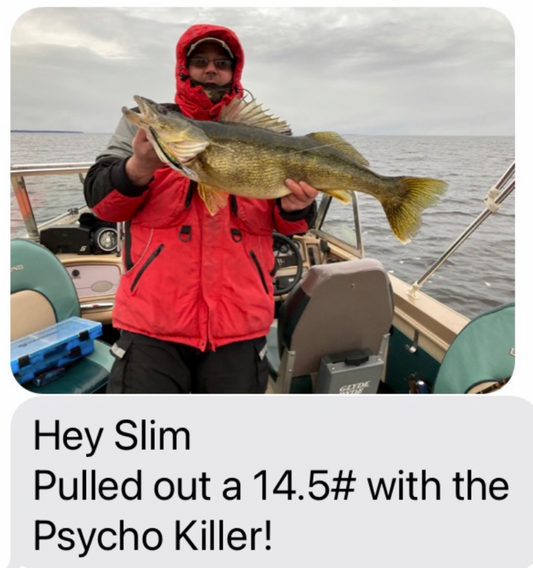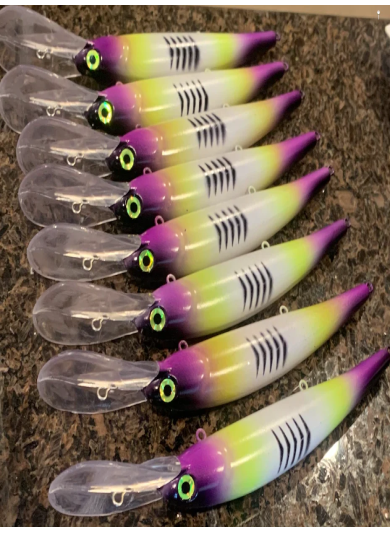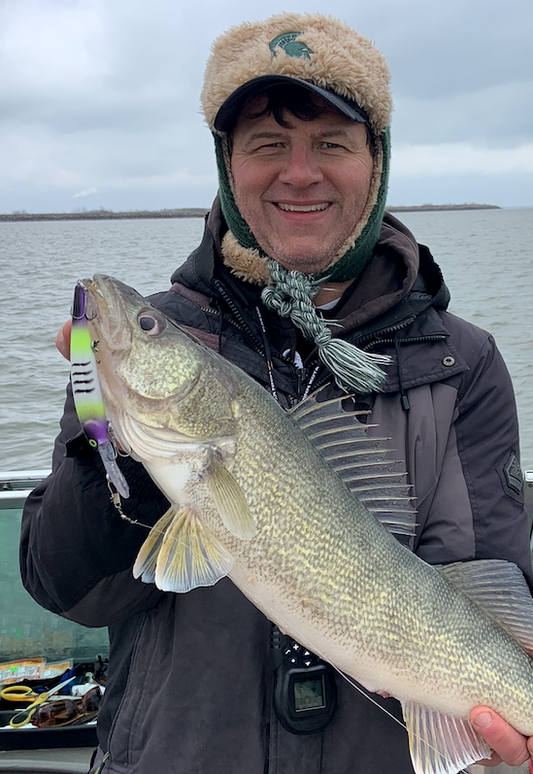Article: Finding the right water color on Lake Erie or Lake St. Clair
In my previous article, I covered how important water color is when trolling for walleyes and what "just right" looks like. In this article, I will cover how I go about finding the right water color without driving all over the lake looking for it.
If you are someone that enjoys chasing walleyes on Lake Erie or Lake St. Clair, then you know just how intimidating they can be when it comes to the number of square miles that they cover. For example, Lake Erie is more than 240 miles long and around 60 miles wide, covering more than 6 million acres. That's a ton of water to cover. If you just focus on the Western Basin, it is still a massive area of water.
I happen to live in the Metro Detroit area, therefore, on any given weekend, I may elect to fish Lake Erie, Lake St. Clair or the Detroit River, depending on the time of year, weather conditions, fishing reports, etc.
I live much closer to Lake St. Clair, therefore, if all things are equal, it is much easier for me to fish there. There are times when Lake St. Clair can produce fish at a similar or better rate than Erie, however, if the conditions are right for Erie, it is hard for me to pass up the chance to go there instead.
Finding the "right" water color:
Regardless of which lake I choose to fish, I first need to know what water/weather conditions I am likely to face on any particular day. I won't go into great detail about the weather side of things in this article, as that could be an article by itself. However, let's say that it is early April, and we are expecting mild weather and winds from the West at 5-10 mph. That is the perfect forecast to plan a trip to Lake Erie. However, I still need to know which launch I should select and where to go once I get there.
As I mentioned earlier, Erie and St. Clair are massive bodies of water, and the water conditions are constantly changing. Water that was perfect one day, might be chocolate milk the next, depending on the wind/weather conditions.
If you are fortunate enough to know a few guides that fish the lakes all the time, then you just call them up and ask them where to go. Unfortunately, most people don't have that option. Therefore, what options do you have?:
1) There are a number of fishing forums that focus on these lakes. There are locals and charter boat captains that frequent those sites who are a wealth of knowledge. Michigan Sportsman's Forums (Detroit River and Lake Erie thread), Western Basin Walleye Report, etc. Someone is likely to point you in the right direction.
2) Leverage the tools that you have at your fingertips. Here's one of the tools/websites that I find extremely valuable:
Nasa Worldview: (https://worldview.earthdata.nasa.gov/?lg=false&t=2022-02-03-T22%3A03%3A24Z). IMO, this is the best "fish-finder" you could ever ask for when it comes to Lake Erie or Lake St. Clair. You can see the satellite image of the lakes, zoom in and see where the mud-lines are, etc. The most amazing part of this tool is that it gives you the GPS coordinates of your cursor as you move it around. (Note: Make sure that the settings match the format of your GPS unit on your boat, or you may not get to the right location). I couldn't get a screen-shot of the GPS numbers, because when I move my cursor off the screen to capture the image, the numbers go away. However, here's a screen-shot of what lake Erie looks like. The GPS coordinates will be at the lower right when you are on the site.

From this image, I can see where the water is muddy, where it looks clean and where the transition lines are. By moving my cursor to those areas, I can see the GPS coordinates. I usually just take a picture of that with my phone and enter those numbers into my GPS on my boat.

The image above is from Lake St. Clair and in this one you can see a very distinct mud line along the South shore of the lake and in the SE corner. Ideally, I would typically try to find the transition line between the mud and the clear. That said, there's also a few other areas that appear to be "chalky" on the map. Those are the areas that usually produce on Lake St. Clair.
The major caveat to this is that you need a clear day or the satellite view is worthless. If that happens, and I don't have an image from the day before to look at, I will go back to the most recent shot that was clear and then try to determine what the weather might have done to it since then.
For illustration purposes, lets say the image above was the most recent one I could find, and it was from 2 days before my trip. The day before my trip, the wind blew from the SW at 10-15 mph. On Erie, a SW wind tends to clear things up, so I can assume that the SW corner will likely be cleaner than it was in the satellite view. Therefore, I might pick a spot that was muddy in the satellite view and use that as my target starting point. From there, I will need to get on the water and see what the lake is actually telling me.
I would also suggest exchanging numbers with guys that you meet at ramp. There have been a number of trips when guys have either helped me find them, or vice-versa. It's a big lake, so its much easier if you can "divide and conquer". Note: If you choose to go this route, PLEASE share your info when you find them, as it can be annoying to reach out 2 hours later and find out that the guys you spoke with are on their way in with 3 limits and they never bothered to tell you. On the flip-side, don't be afraid to ask. It's a 2-way street. Give and get.
Good luck and see you on the water!!
